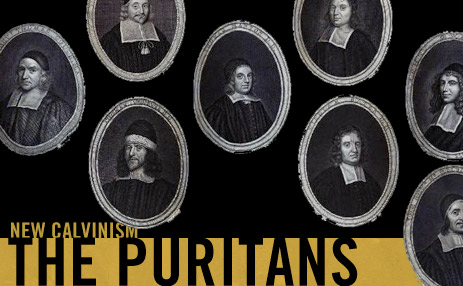Latest
-
Objections to the Christian Faith from the Unchurched and De-Churched
 Tue Dec 02, 2014
Tue Dec 02, 2014
by Resurgence -
Craig Groeschel: We Innovate for Jesus
 Tue Oct 14, 2014
Tue Oct 14, 2014
by Resurgence -
Mark Driscoll: Revelation
 Tue Oct 07, 2014
Tue Oct 07, 2014
by Resurgence -
RESURGENCE LEADERSHIP #034: JOHN PIPER, WHY I TRUST THE SCRIPTURES, PART 2
 Tue Sep 30, 2014
Tue Sep 30, 2014
by Resurgence -
Resurgence Leadership #033: John Piper, Why I Trust the Scriptures, Part 1
 Tue Sep 23, 2014
Tue Sep 23, 2014
by Resurgence

Archives
The Puritans on the Church
 The Puritans remain one of the greatest expressions of biblical Christianity the world has ever known. Puritanism was sparked by many years of conflict in England, where the Church of England vacillated between Catholic and Protestant practices depending upon which king or queen was ruling at the time. For example, many Protestant Christians and pastors were driven out of England during the reign of Queen Mary I, who burned Protestant pastors. Following her death, Queen Elizabeth promoted Protestantism, thus welcoming back to England exiled pastors who had been trained by the great Reformation pastor John Calvin. Elizabeth’s lengthy reign (1558–1603) turned bloody as Protestants and Catholics fought for the soul of the church and the nation. The Puritans sought to reform the Church of England from within by purifying it from Catholic superstition and tradition via a return to Scripture. King James I then assumed the throne in England and opposed the Puritan reform efforts. The only exception was his consent for the printing of the now-legendary 1611 King James Version of the Bible.
The Puritans remain one of the greatest expressions of biblical Christianity the world has ever known. Puritanism was sparked by many years of conflict in England, where the Church of England vacillated between Catholic and Protestant practices depending upon which king or queen was ruling at the time. For example, many Protestant Christians and pastors were driven out of England during the reign of Queen Mary I, who burned Protestant pastors. Following her death, Queen Elizabeth promoted Protestantism, thus welcoming back to England exiled pastors who had been trained by the great Reformation pastor John Calvin. Elizabeth’s lengthy reign (1558–1603) turned bloody as Protestants and Catholics fought for the soul of the church and the nation. The Puritans sought to reform the Church of England from within by purifying it from Catholic superstition and tradition via a return to Scripture. King James I then assumed the throne in England and opposed the Puritan reform efforts. The only exception was his consent for the printing of the now-legendary 1611 King James Version of the Bible.
The Pilgrims
Despite hardship and persecution, some Puritans were patiently determined to incrementally work for reform within the Church of England. Some Puritans, however, grew impatient with the slow pace of change and wanted to pursue a radical experiment with a church free to obey Scripture without the hindrances of bishops and kings. These revolutionaries were largely young zealous Christians in their twenties; they came to be known as the Pilgrims. The Pilgrims felt compelled to set sail for the New World of America and there found a religious experiment where God and Scripture ruled over all of life. So, one hundred Pilgrims left Plymouth, England, on September 6, 1620. Two months later the Mayflower landed at Cape Cod, Massachusetts, and the Plymouth Colony was settled. In an effort to establish law and order, the Mayflower Compact was instituted on November 11, 1620. The first winter in America was very difficult and roughly half of the Pilgrims died. Thirteen of the eighteen wives died, and only three families were not touched by death. Fortunately, the Wampanoag Indians taught the Pilgrims how to hunt and fish, or the death toll would have been much higher. The 1630s were the time of the “great migration” led by the preaching lawyer John Winthrop. The Pilgrim population grew to more than nine thousand as the young Christians pursued their dream of a nation marked by God’s rule according to God’s Word.
All of Life Is Sacred
The Puritan vision of the Pilgrims saw the rule of Jesus Christ extending over all aspects of culture. Nothing was considered secular, but rather everything—from work to leisure—was sacred and to be done unto the Lord. Puritan worship included sermons lasting two hours, Sunday as a dedicated day of Sabbath for all, buildings without stained glass or icons, and congregational singing without musical accompaniment. Oddly, people who deny themselves pleasure according to ascetic legalisms are commonly accused of acting “Puritanical.” However, the Puritans and Pilgrims greatly enjoyed reading books, making music, drinking beer and rum, swimming, ice skating, hunting, fishing, archery, and bowling. In fact, the first permanent building erected at Plymouth Rock was a brewery, and churches were known to publicly discipline husbands who failed to meet the amorous needs of their wives.
For Further Study
Following in the Puritan wake are such great Christian pastors as Jonathan Edwards and Charles Haddon Spurgeon. For those wishing to further study the Puritans and Pilgrims, perhaps the best and cheapest primary sources are the Puritan paperbacks published by Banner of Truth that I cut my theological teeth on as a new Christian in college. Very helpful secondary sources include Leland Ryken’s book Worldly Saints and J. I. Packer’s book A Quest for Godliness: The Puritan Vision of the Christian Life.